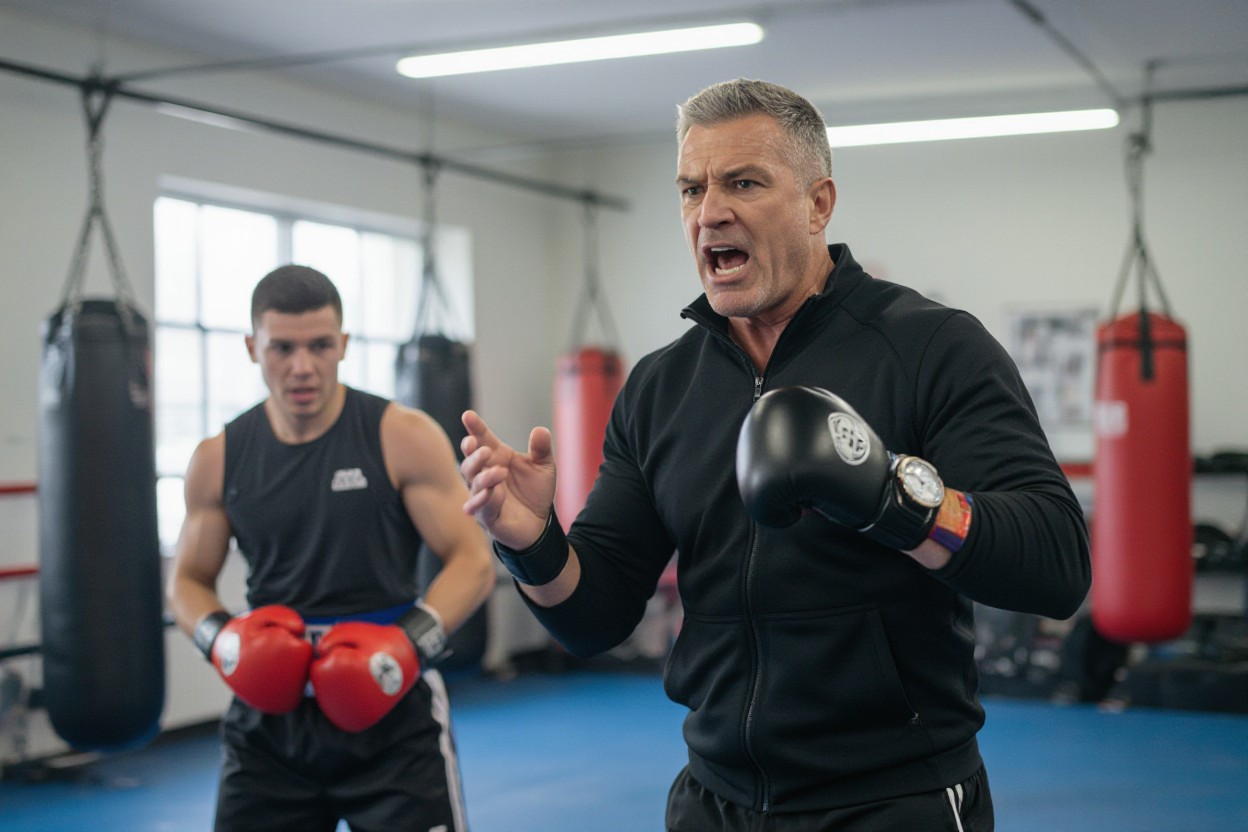
The psychology of boxing trainers – Motivating fighters to perform at their best
It’s not just about teaching technique and strategy when you step into the role of a boxing trainer. Your ability to understand the intricate mental landscape of fighters determines their success in the ring. As a trainer, you become part mentor, part psychologist, mastering the delicate balance between pushing athletes beyond their comfort zones and protecting their mental well-being. Through carefully crafted motivation techniques, you can transform raw talent into championship material, but one wrong word or mishandled situation could shatter a fighter’s confidence moments before they step through the ropes.
The Art of Motivation: Crafting the Trainer-Fighter Bond
The foundation of any successful trainer-fighter relationship stems from authentic connections built in the gym. Through consistent presence, honest feedback, and unwavering support, you establish yourself as more than just a technical coach. Fighters need to know you’re invested in their success beyond the ring. Share your own experiences, acknowledge their progress, and demonstrate your expertise through actions rather than words. This creates a two-way street where fighters naturally want to perform better for someone they trust and respect.
Recognizing Individual Psychological Needs
Each fighter responds differently to motivation. Some thrive on tough love and direct challenges, while others need positive reinforcement and gentle guidance. Your ability to read psychological cues and adapt your approach determines how effectively you can push your fighters to excel. Understanding their personal triggers, fears, and motivations allows you to customize your coaching style for maximum impact.
Consider how champions like Mike Tyson and Muhammad Ali required vastly different psychological approaches from their trainers. Cus D’Amato recognized Tyson’s need for father-figure guidance and philosophical teaching, while Angelo Dundee played to Ali’s natural confidence and showmanship. Your psychological toolkit must include various motivation techniques – from quiet confidence-building to energetic motivation. Study your fighters’ reactions during training, sparring, and competition to fine-tune your approach and create personalized motivation strategies that resonate with their individual mindsets.
Psychological Strategies for Enhancing Performance
Boxing trainers employ specific psychological techniques that transform good fighters into champions. These methods target both mental preparation and emotional resilience, creating a comprehensive approach to performance enhancement that extends far beyond physical training.
Visualization Techniques for Success
Top trainers guide fighters through detailed mental rehearsals, having them visualize every aspect of success in the ring. You’ll learn to see yourself executing perfect combinations, maintaining composure under pressure, and ultimately getting your hand raised. This mental practice activates the same neural pathways as physical training, effectively doubling your preparation time and building unshakeable confidence.
The Role of Positive Reinforcement
Strategic praise and recognition serve as powerful tools in a boxer’s development. You’ll find that well-timed positive feedback creates lasting behavioral changes and reinforces winning habits. The most successful trainers maintain a 3:1 ratio of positive to constructive feedback, building fighters’ confidence while addressing areas for improvement.
The science behind positive reinforcement in boxing reveals that dopamine release during praise enhances motor learning and skill retention. Your trainer’s acknowledgment of proper technique, successful combinations, or improved footwork triggers this neurochemical response, making you more likely to repeat and perfect these actions. Champions like Mike Tyson and Muhammad Ali worked with trainers who mastered this balance, using praise to fuel their fighters’ drive while maintaining high standards.
The Influence of Mental Toughness on Boxing Success
Mental toughness separates champions from contenders in boxing. Research shows that 87% of elite boxers attribute their success more to psychological strength than physical abilities. The mindset developed through years of training, facing adversity, and pushing beyond comfort zones creates the foundation for handling intense pressure during fights. Boxing trainers who understand these psychological dynamics can effectively shape their fighters’ mental fortitude alongside their technical skills.
Defining Mental Resilience in Fighters
Mental resilience in boxing manifests as the ability to maintain focus and performance under extreme stress. Your fighter’s capacity to bounce back from knockdowns, adjust tactics mid-fight, and push through exhaustion directly reflects their psychological conditioning. Studies of championship boxers reveal common traits: high pain tolerance, emotional control, and unwavering self-belief – all trainable aspects of the fighter’s mindset.
Strategies to Cultivate Grit and Determination
Developing mental toughness requires systematic exposure to challenging situations. Incorporate progressive stress testing in training, such as rounds with multiple fresh opponents, conditioning work after technical drills, and sparring sessions that push physical limits. Create scenarios where fighters must adapt and overcome, building psychological calluses alongside physical ones.
Advanced mental conditioning techniques include visualization exercises before big fights, breathing protocols during high-intensity training, and post-session reflection practices. Your fighters should regularly face situations that test their resolve – whether it’s completing an exhausting combination drill or maintaining technique while fatigued. Leading trainers like Freddie Roach and Cus D’Amato have long emphasized creating training environments that forge both mind and body, understanding that mental fortitude often determines the outcome in evenly matched bouts.
Identifying and Overcoming Psychological Barriers
Fear of getting hit, self-doubt about abilities, and performance anxiety represent the most prevalent mental barriers boxers face. These psychological hurdles can manifest as hesitation during crucial moments, inability to pull the trigger on combinations, or freezing up entirely when facing aggressive opponents. Many fighters struggle with impostor syndrome, questioning whether they truly belong in the ring, while others battle the mental aftermath of previous losses or injuries that hold them back from reaching their full potential.
Techniques for Breaking Through Limits
Breaking through mental barriers requires a systematic approach combining visualization, controlled exposure, and progressive challenge escalation. Start by having your fighters face their fears in controlled sparring sessions, gradually increasing intensity as their confidence grows. Implement visualization exercises where boxers mentally rehearse overcoming specific situations that trigger their anxiety. Create specific drills that target their weak points while maintaining a supportive environment.
Your role as a trainer extends beyond physical instruction – you’ll need to develop personalized strategies for each fighter’s unique mental blocks. This might involve using video analysis to show fighters their successful moments, implementing breathing techniques during high-stress situations, or creating specific codewords that trigger positive mental states during fights. Regular check-ins and progress tracking help maintain momentum and reinforce breakthrough moments. Partner with sports psychologists when needed to address deeper-rooted issues that affect performance.
The Role of Communication and Feedback
Communication between trainer and fighter forms the foundation of technical development and psychological growth in boxing. Research by the International Journal of Sports Psychology reveals that boxers who receive clear, consistent communication from their trainers show 43% better performance outcomes compared to those with poor trainer communication. The trainer’s ability to convey instructions, strategies, and mental preparation techniques directly impacts a fighter’s success in the ring.
Effective Communication Styles for Trainers
Your communication style needs to adapt to each fighter’s personality and learning preferences. Some athletes respond better to direct, straightforward instructions, while others need metaphorical explanations or visual demonstrations. Top trainers like Freddie Roach combine technical instruction with storytelling, using examples from boxing history to illustrate key points. Reading your fighter’s body language and adjusting your approach accordingly maximizes their receptiveness to training.
Importance of Constructive Feedback
Constructive feedback drives improvement and builds confidence when delivered properly. Studies show that fighters who receive balanced feedback – combining 70% positive reinforcement with 30% corrective guidance – demonstrate faster skill acquisition. Your feedback should focus on specific actions, providing clear pathways for improvement rather than general criticisms.
The timing and context of feedback significantly influence its effectiveness. Delivering immediate feedback during training helps correct technical flaws, while post-fight analysis requires a more measured approach. World-class trainers like Emanuel Steward were known for their ability to provide critical feedback during the 60-second breaks between rounds, focusing on one or two key adjustments that could change the fight’s momentum. This strategic approach to feedback helps fighters maintain focus and confidence while making necessary tactical adjustments.
Summing up
Presently, your success as a boxing trainer hinges on understanding the delicate balance between physical and psychological preparation. When you master the art of motivation, you’ll find that each fighter responds uniquely to different approaches – whether through positive reinforcement, goal-setting, or visualization techniques. Your ability to build trust, recognize mental barriers, and adapt your communication style directly impacts your fighter’s performance in the ring. By implementing these psychological strategies alongside technical training, you’ll create an environment where fighters can reach their full potential and achieve peak performance.

